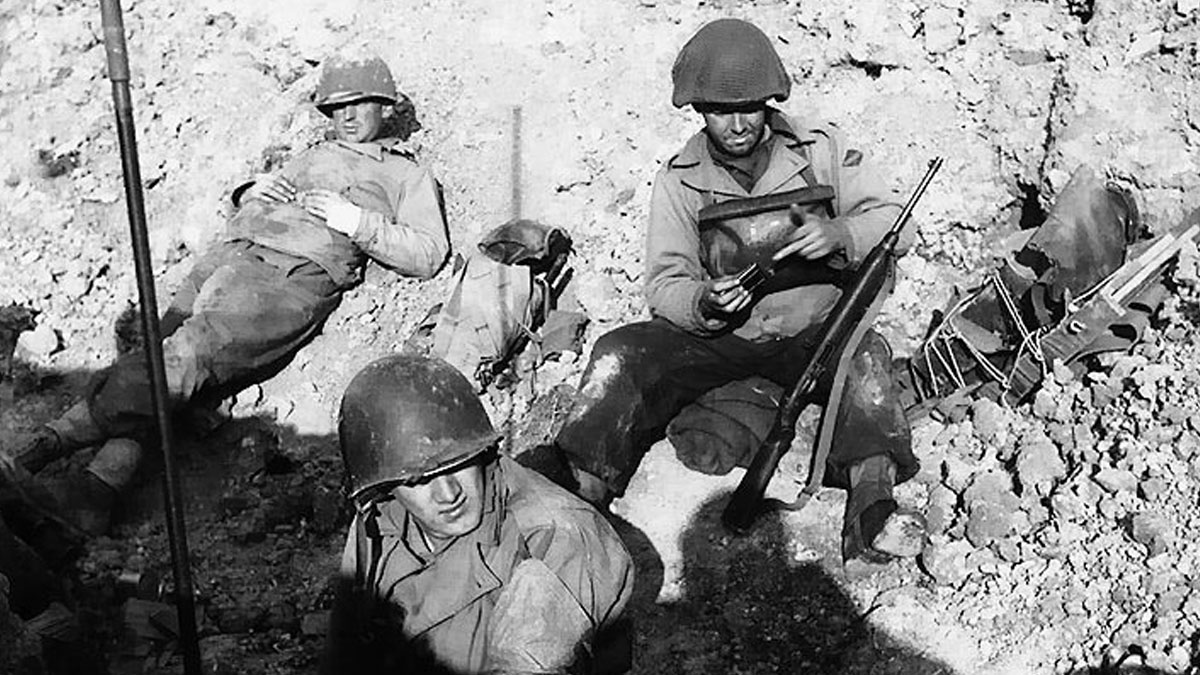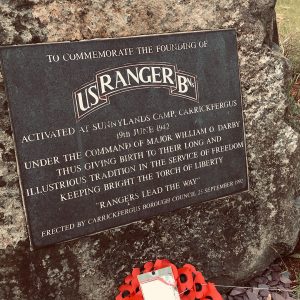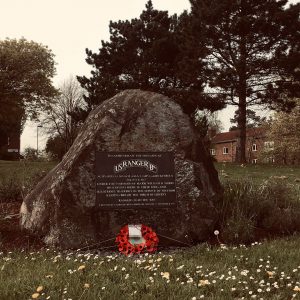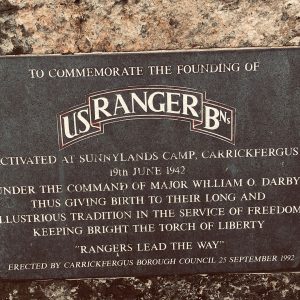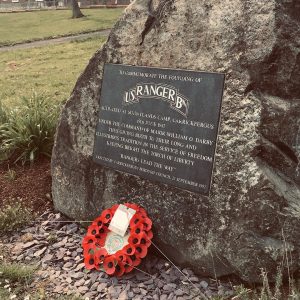During the Second World War, Carrickfergus, Co. Antrim was a hive of activity. One of the stories often told is of the formation of the United States Army Rangers at Sunnylands Camp.
The camp stood on the edge of the town to the northern side of the railway line. The large camp extended from an eastern boundary on North Road halfway to Salthill in the west covering an area of around 4 hectares. American GIs based at Sunnylands Camp stayed in Nissen huts. As well as accommodation blocks, there was a large area for training and exercises. After the Americans left, locals suggest the site became a holding ground for German prisoners of war.
Soon after the US Army arrived in Northern Ireland, they made plans for a new unit. This was to be “an American unit along the lines of the British Commandos”. Discussions took place between Major General Lucian Truscott and the British Chief of the General Staff General George Marshall. The Commandos activated during the Second World War were tough, skilled, and elite units. Shortly after the discussions, a diplomatic cable arrived with Truscott. This document authorised activation of the 1st US Army Ranger Battalion.
Darby's Rangers
US Army Captain William Orlando Darby became the commanding officer of the new unit. Darby had been in Northern Ireland since the first US troops arrived. During that time, he developed an interest in the British Commando units and their tactics. He was a graduate of West Point Military Academy and already an experienced commander. With an impeccable record and experience in amphibious training, he was an ideal choice. Within weeks he received a promotion to Major.
Over 1,500 men across the US Army in Northern Ireland volunteered for the new Rangers unit. A rigorous selection process took place at Sunnylands Camp, Carrickfergus, Co. Antrim. By the end of this process, Darby had hand-picked 600 men. Over 80% of those selected came from the 34th Infantry (Red Bull) Division. “Darby’s Rangers”, Company A, 1st Ranger Battalion activated at Sunnylands Camp, Carrickfergus, Co. Antrim on 19th June 1942. Soon after, the battalion traveled to Achnacarry, Scotland to train with British Commandos. After brutal training under Lieutenant Colonel Charles Vaughan, around 500 of Darby’s men made the grade.
Darby’s United States Army Rangers were the first US ground force to see action in Europe during the Second World War. They joined with British and Canadian troops at Dieppe on 19th August 1942. It was there Lieutenant Edward Vincent Loustalot became the first US Army troop killed in action. Only 87 of the 500 men would survive the war.
US Rangers Centre
Today, Sunnylands Camp is a housing estate. An area of greenery occupies most of the space while the houses sit off to one side. The American Nissen huts stood where the tree line borders the estate. The railway line still runs past Sunnylands behind the trees.
Before the US Army Rangers Centre came into being, only a memorial stone marked the old Sunnylands Camp. Carrickfergus Borough Council erected the monument in 1992. The US Rangers Centre stands next to the Andrew Jackson Cottage in Boneybefore, Carrickfergus, Co. Antrim. It first opened in 1994 after visiting Rangers veterans donated memorabilia after a 50th-anniversary commemoration. Today, an updated museum provides a unique tourist experience and remembers the bravery of Darby’s Rangers.
The new look visitor attraction reopened on 17th June 2017 to mark the 75th anniversary of the US Army Rangers’ activation. It features more unseen artefacts, photographs, and authentic film footage. Still going strong under their motto of “lead the way”, the US Rangers remain the only US Army Battalion activated on foreign soil.
